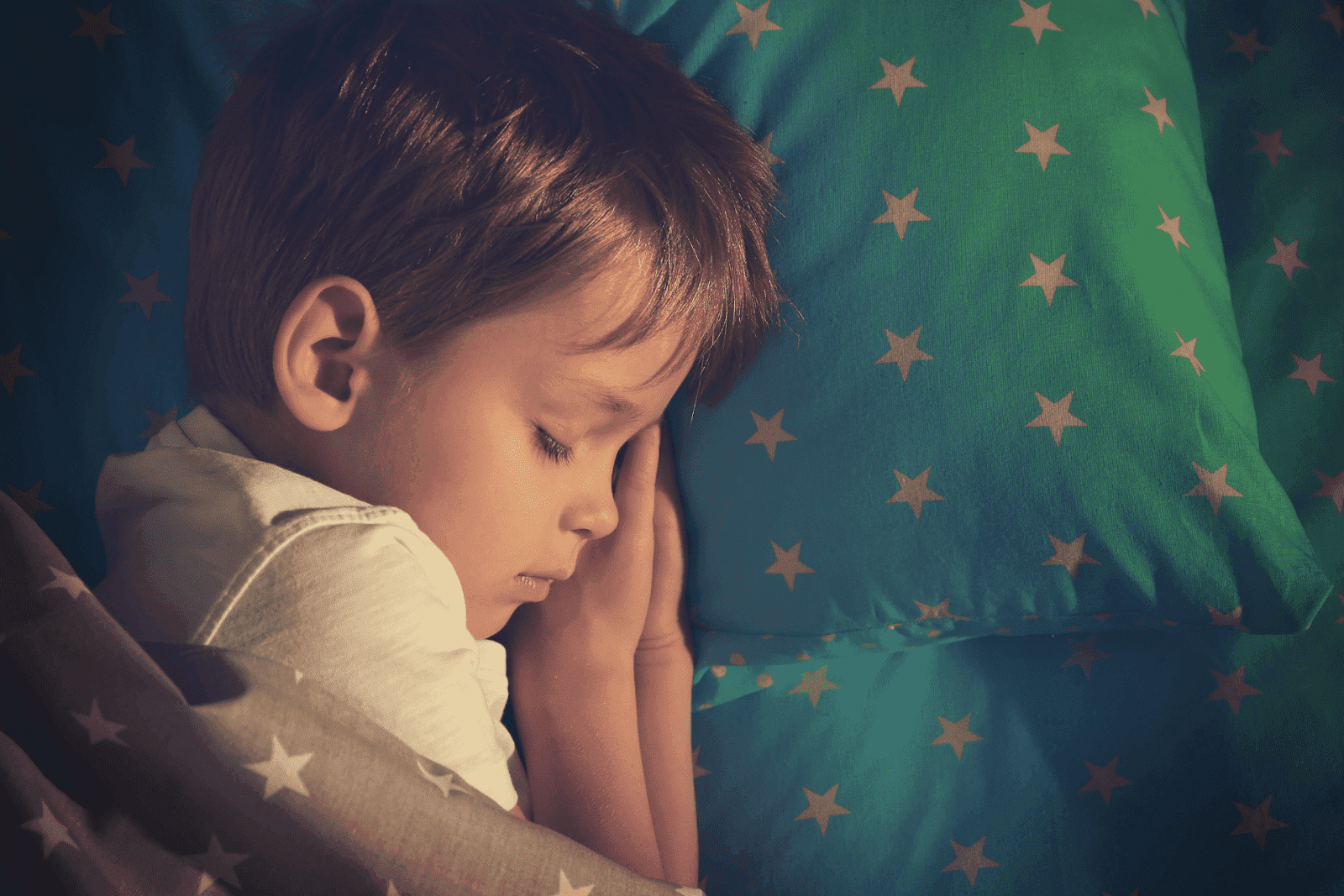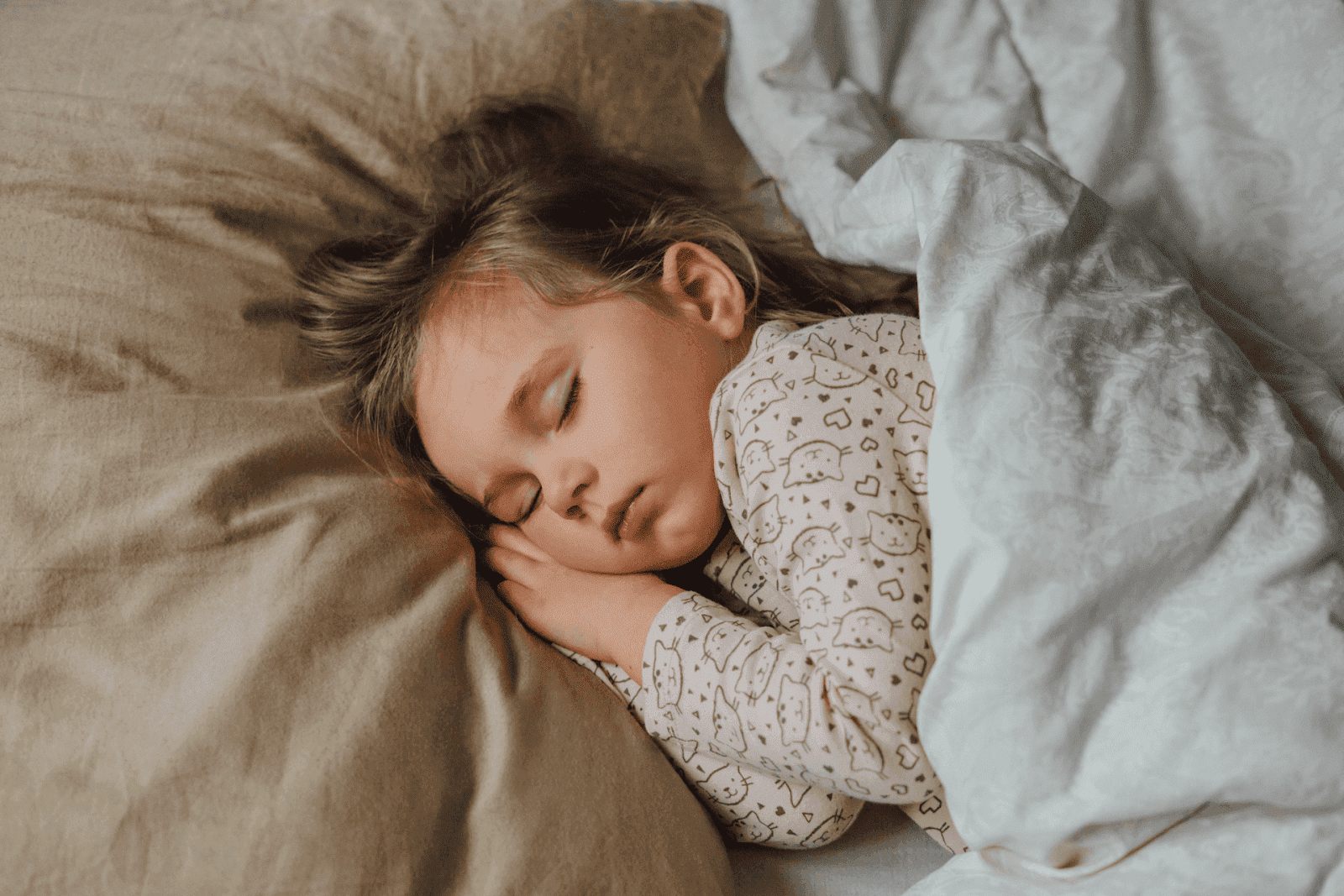Does Mounjaro Affect Fertility?
Understanding Mounjaro and Its UsesMounjaro is a prescription medication commonly prescribed for managing type 2 diabetes. It belongs to a class of drugs that help regulate [...]
Read More
Medically reviewed by Alan Lucks | MD, Alan Lucks MDPC Private Practice - New York on August 18th, 2025.
Night sweats can be alarming for parents. A damp pillow, soaked pajamas, or a child waking up shivering after a sweaty sleep can raise immediate concerns: Is this a fever? An infection? Something more serious? This guide explains common causes of night sweats in children, how to tell when they’re harmless, and when to seek medical attention. It also outlines practical home steps and how telehealth services like Doctronic.ai can help parents get fast, credible guidance when sleep is disrupted and worry sets in.
Night sweats are episodes of excessive sweating during sleep. The amount of sweat can range from a slightly damp shirt to drenched bedding. In children, night sweats are common and often not a sign of serious illness. Sweating is a normal way for the body to regulate temperature, and various benign triggers can increase sweating at night.
The distinction between normal sweating and pathological “night sweats” depends on pattern, severity, and associated symptoms. If sweating is accompanied by fever, weight loss, prolonged fatigue, breathing changes, or recurrent infections, it warrants closer attention.
 Common and Harmless Causes
Common and Harmless CausesMany reasons for nighttime sweating are straightforward and easy to address. These include environmental factors, sleepwear choices, and normal developmental physiology.
Overbundling: Young children are sensitive to temperature and often get overdressed for sleep. Heavy blankets, thick pajamas, and warm rooms are frequent culprits. For infants and toddlers, especially, removing a layer or choosing breathable fabrics often resolves the issue.
Vigorous play before bed and growth-related changes can also increase metabolic rate and lead to night sweats. Certain benign sleep disorders, such as nightmares or night terrors, may trigger sweating through transient surges of sympathetic nervous system activity without an underlying disease.
Occasional sweating during sleep that improves with environmental changes is usually harmless. However, some patterns deserve prompt evaluation:
Persistent or worsening night sweats for weeks to months that are not explained by room temperature or clothing choices.
Night sweats accompanied by systemic signs: fever, unintentional weight loss, fatigue, persistent cough, swollen lymph nodes, or recurrent infections. These patterns may indicate infections (like tuberculosis or endocarditis), inflammatory conditions, or, rarely, malignancy.
When night sweats occur with fever, they commonly reflect an infectious process. Viral infections such as influenza or more persistent bacterial infections can cause sweating during the febrile course, especially during the downward phase of a fever.
Persistent night sweats plus chronic cough, night-time fevers, or weight loss warrant medical evaluation for chronic infections such as tuberculosis or certain fungal infections. Immune-mediated conditions that cause prolonged inflammation can produce similar symptoms.
Night sweats can be a feature of malignancies (like lymphoma), endocrine disorders (such as hyperthyroidism), and autonomic dysfunction. These causes are uncommon in children but should be considered when sweating is severe, persistent, and paired with other red flags.
Start by assessing the context. Parents can keep a simple log for several nights, noting room temperature, bedding, pajamas, recent activity, diet, and any symptoms such as cough, fever, or weight loss. This log can help identify environmental patterns or triggers.
Temperature and clothing: Measure the bedroom temperature and try lighter clothing or breathable cotton PJs. If sweating improves with these changes, it’s likely environmental. For infants, follow safe sleep recommendations: avoid loose blankets and overbundling; use appropriate sleep sacks if needed, and keep room temperature comfortable (typically 68–72°F / 20–22°C, though individual comfort varies).
Observe associated symptoms: Check for fever, cough, rash, limb pain, neck stiffness, or changes in appetite or energy. Sudden onset of sleep-disrupting sweats with other concerning signs should prompt contact with a healthcare provider.
Seek urgent medical advice if night sweats are combined with any of the following:
High fever that doesn’t respond to antipyretics or is rapidly rising.
Persistent vomiting, dehydration, severe breathing difficulty, lethargy, or inability to stay awake.
Unintentional weight loss, painless lumps (enlarged lymph nodes), recurrent infections, or prolonged symptoms lasting several weeks.
When in doubt, parents should consult a medical professional. For many families, telehealth is a fast, practical way to get an initial assessment without leaving home. Doctronic.ai offers free AI-powered evaluations and affordable video visits with licensed clinicians 24/7 across all 50 states, providing follow-up care for under $40.
Healthcare providers begin with a focused history and physical exam. They review the pattern of sweating, associated symptoms, medication use, recent travel, exposures (such as close contacts with TB), and medical history, including immunizations.
The clinical picture guides laboratory tests and imaging: complete blood count, inflammatory markers (like ESR/CRP), chest X-ray if respiratory symptoms are present, or targeted tests for infections. Endocrine evaluations (thyroid function tests) may be ordered if signs of hyperthyroidism appear. Specialized testing is reserved for persistent, unexplained cases.
Treatment depends on the underlying cause. For environmental or benign reasons, simple measures are effective: lighter bedding, breathable pajamas, a cooler room, and avoiding high-sugar drinks or heavy meals before bedtime.
If an infection is identified, appropriate antibiotic, antiviral, or antifungal therapy is prescribed. For inflammatory or endocrine conditions, referral to pediatric specialists and targeted therapy will follow based on diagnosis. Symptomatic care, hydration, fever control with acetaminophen or ibuprofen (as age-appropriate), and ensuring restful sleep, help most children recover comfortably.
Establishing a consistent bedtime routine, avoiding vigorous exercise and heavy snacks close to bedtime, and keeping the bedroom cool and well-ventilated can reduce nighttime sweating. Choosing natural, breathable fabrics like cotton for pajamas and mattress covers also helps.
Infants have immature thermoregulation and can sweat more easily. Because they can’t communicate symptoms, greater caution is warranted. Avoid overdressing infants and use sleep sacks designed for newborns. Prompt evaluation is recommended if an infant has night sweats plus fever, poor feeding, irritability, or decreased urine output.
Parents of newborns should follow safe-sleep guidelines and seek advice for any concerning symptoms rather than waiting. Telehealth platforms like Doctronic.ai can be useful for quick guidance and to determine whether an in-person exam is needed.
Certain medications and substances may provoke sweating. Common culprits include antipyretics (sometimes during a fever break), antidepressants, stimulant medications used for ADHD, and some antihypertensives. Withdrawal from substances, including caffeine or nicotine, in adolescents, can also trigger sweats.
Review current medications with a clinician if night sweats begin after starting a new drug. Adjustments or substitutions may resolve the issue under medical supervision.
Anxiety, panic attacks, and intense nightmares can activate the sympathetic nervous system and cause sweating during sleep. Emotional or psychological factors should be explored if there’s a history of anxiety or recent stressors in the child’s life.
Addressing stress, improving sleep hygiene, and seeking behavioral health support when needed can reduce anxiety-related sleep disturbances and their physical manifestations.
Telehealth offers rapid access to medical evaluation and triage for worried parents. For non-emergent concerns, such as evaluating whether environmental changes might help, reviewing associated symptoms, or arranging timely testing, telemedicine provides immediate guidance without waiting rooms or lost sleep.
Doctronic.ai provides a two-tiered approach: a free AI-powered visit that gives evidence-based feedback and recommendations in seconds, and affordable video visits with licensed clinicians available around the clock in all 50 states for follow-up care (generally under $40). This model is useful for parents who need fast, reliable advice and may want a written summary to take to an in-person doctor if needed.
If concerns persist and an in-person or virtual medical visit is scheduled, bring the sleep log mentioned earlier, a list of current medications, recent travel or exposure history, vaccination records, and details about associated symptoms. Note any patterns. Does sweating occur every night, only during naps, or after certain activities?
Detailed observations help clinicians narrow down causes quickly and decide which tests, if any, are necessary. A clear description of the onset, frequency, and severity is often as helpful as a physical exam in directing next steps.
Head to the emergency department for high fevers not responding to medicines, severe respiratory distress, altered mental status, persistent vomiting, signs of dehydration, or seizures. Otherwise, urgent care or a telehealth visit can be appropriate first steps for non-life-threatening but worrying symptoms.
Doctronic.ai does not provide listings of urgent care locations or their hours, so check local resources or contact a clinician through a telehealth visit for guidance about whether an in-person urgent care visit is necessary.
 Practical Takeaways for Parents
Practical Takeaways for ParentsMost night sweats in children are harmless and related to the environment, clothing, or normal physiology. Simple fixes, cooler room temperature, breathable sleepwear, and a consistent bedtime routine, resolve many cases.
Look for red flags: persistent symptoms, fever, unexplained weight loss, respiratory changes, or signs of systemic illness. If any of these are present, seek medical evaluation. Doctronic.ai can provide immediate, evidence-based assessments for free and low-cost clinician visits 24/7 to help triage and manage these concerns.
Start by making simple environmental changes and tracking sleep patterns. If night sweats persist or are accompanied by worrying signs, use a trusted telehealth service for rapid medical advice or book an in-person visit. Doctronic.ai offers quick, AI-driven evaluations and affordable clinician video visits across the United States, helpful tools for families seeking fast reassurance or next steps without delay. Visit Doctronic.ai to learn how to get an immediate assessment or schedule a clinician visit.
Keeping a calm, observant approach and using available telehealth resources can reduce anxiety and ensure any serious causes are identified early. Night sweats are common, and with reasonable vigilance and timely care, most children recover quickly and comfortably.
If you’re worried about night sweats and want fast, reliable guidance, try Doctronic, the #1 AI Doctor headquartered in NYC. Our AI doctor provides free, evidence-based evaluations in seconds and remembers your history, and when you need follow-up care, you can book a convenient video visit with a licensed clinician 24/7 for under $40 in all 50 states. Over 10 million people have used Doctronic to get smarter, faster, and more personal care. Skip the line. Talk to an AI Doctor Now, for free.
Environmental factors cause the vast majority of childhood night sweats, which resolve quickly with proper room temperature and breathable sleepwear. Seek medical evaluation if sweating persists beyond 2-3 weeks or occurs with fever, weight loss, or breathing problems. If you're concerned about persistent symptoms, Doctronic can help you determine whether your child's night sweats warrant further medical attention.
Understanding Mounjaro and Its UsesMounjaro is a prescription medication commonly prescribed for managing type 2 diabetes. It belongs to a class of drugs that help regulate [...]
Read MoreUnderstanding Hydrocortisone Uses and DosagesHydrocortisone is a versatile medication primarily used to reduce inflammation and suppress the immune system in various [...]
Read MoreUnderstanding Zepbound and MounjaroWhen managing type 2 diabetes, patients often face a variety of medication options. Zepbound and Mounjaro are two such options gaining [...]
Read More